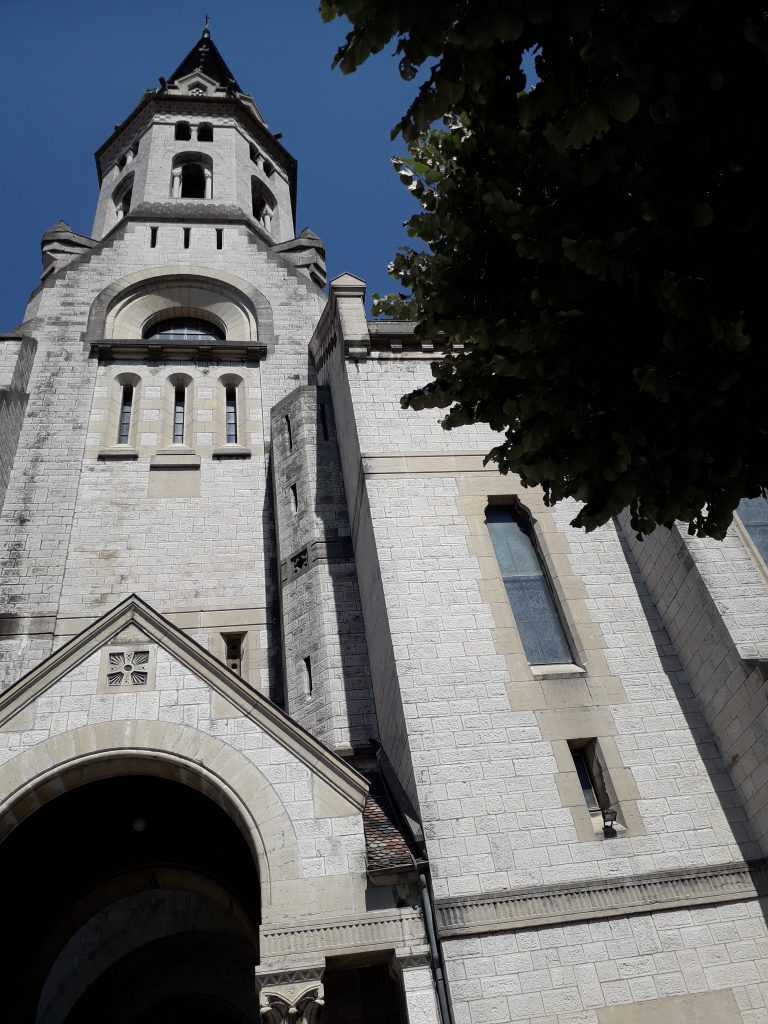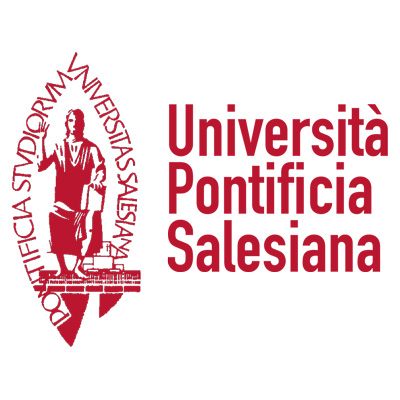
The Founders
Francis de Sales
He was born in 1567 in the Sales castle near Thorens in upper Savoy. From 1573 to 1591 he completed his studies, first in Savoy, then in Paris finally in Padua, where he received the title of doctor in utroque iure. On Dec. 18, 1593, he was ordained a priest by Mgr. de Granier, bishop of Geneva exiled to Annecy, who shortly after Christmas appointed him provost of the chapter. From 1594 to 1598 he fulfilled a mission in the Chablais, leading the region back to the Catholic faith. In 1602 he went to Paris, charged by his bishop with a diplomatic mission. Here he had the opportunity to attend Madame Acarie’s circle and meet the main exponents of the different spiritual currents. In the same year, on the death of Msgr. de Granier, he succeeded him at the head of the diocese, having been consecrated bishop on December 8 in the church at Thorens. As a pastor, he gave himself entirely to the service of his people, faithful to the Tridentine directives, and at the same time attentive to grasp and respond to the signs of the times. He carried out pastoral visits to the vast diocese, and had a special concern for priests, taking care of their selection and formation. He lived in great poverty and became known for his meekness, the wisdom of his spiritual director, and the profound doctrine of his preaching. He died in Lyon in 1622. He was canonized in 1665, declared Doctor of the Church in 1877, and patron of journalists in 1923; he is also patron of deaf-mutes. Despite his prodigious activity, he leaves behind an enormous quantity of letters, an inexhaustible mine for the spiritual life, and masterpieces such as the Introduction to the Devout Life (later known as Philothea) and the Treatise on the Love of God, (or Theotimo), peaks of 17th-century French literature, not to mention their theological and spiritual value.
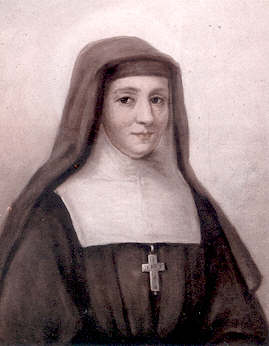
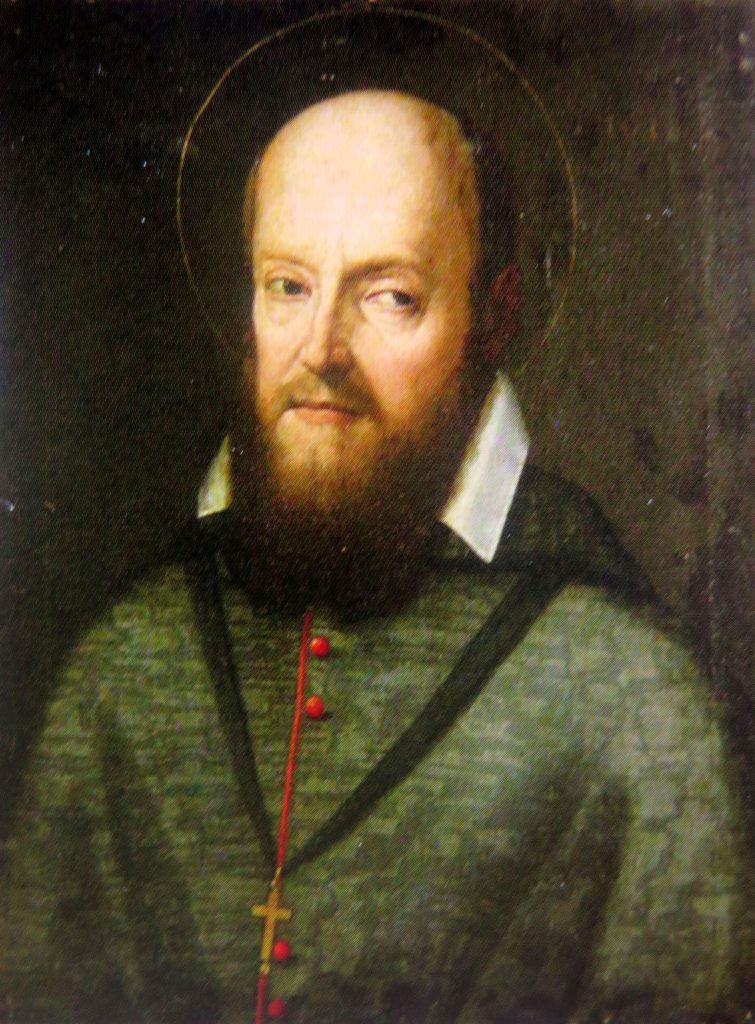
Joan Frances Fremyot de Chantal
She was born in Burgundy in 1572. In 1592 she married Baron Christophe de Chantal by whom she had six children (two of whom died at birth). Widowed, in March 1604 she met Francis de Sales in Dijon and placed herself under his spiritual guidance. Thus began that journey that would mature into a relationship of spiritual friendship among the most intense and significant in the history of spirituality and lead her to initiate with other companions the Visitation form of life. It was due to her tireless and enlightened dedication that the Order took root and expanded, as well as, after Francis’ death, the faithful interpretation and guardianship of his spirit. Gifted with a remarkable practical sense, active and far-sighted, she had a deep and often suffering interior life. From the earliest years of the Visitation, we find her busy founding new houses or traveling to visit communities and being present where difficulties arise or there are problems to be solved. She died precisely while traveling, at the Visitation in Moulins, on December 13, 1641. She is canonized in 1767.
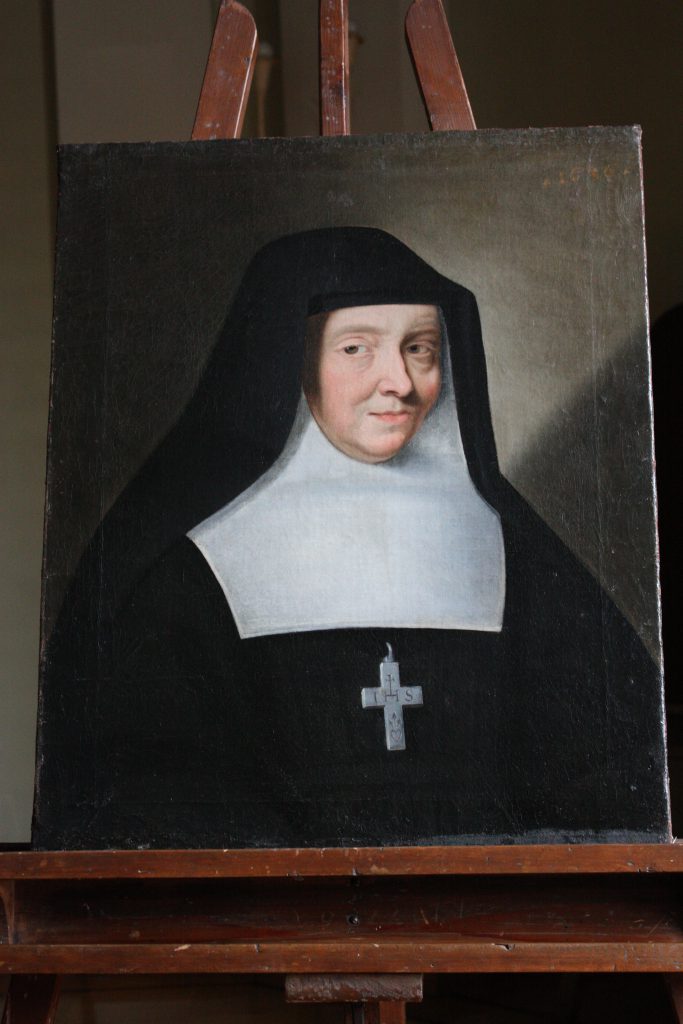
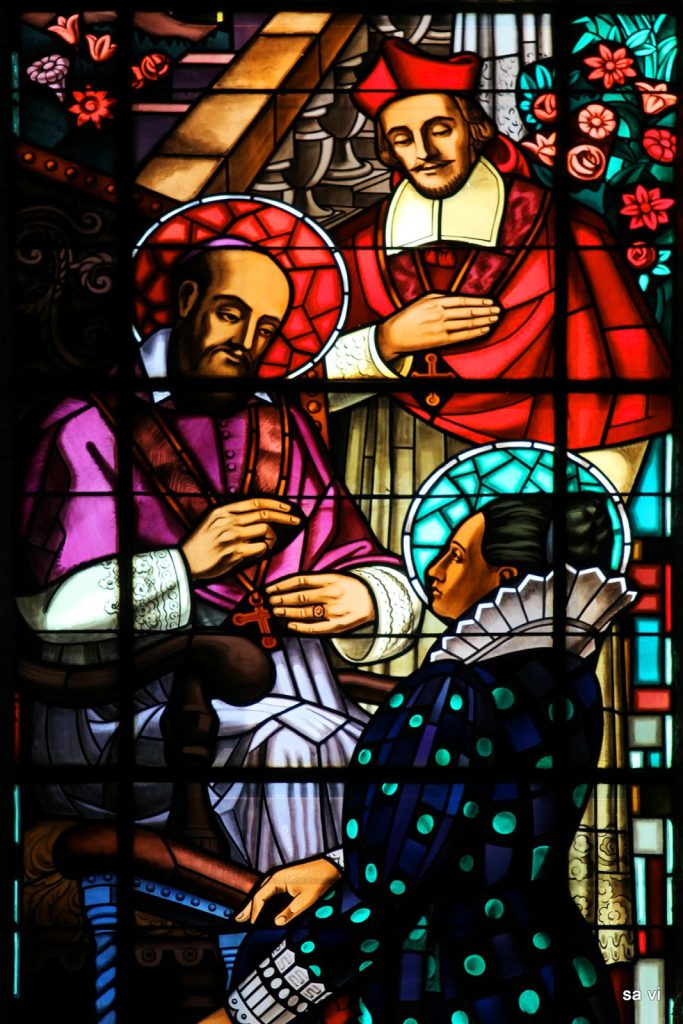
The premises of the foundation
Francis de Sales is a father and spiritual guide to a wide variety of people, whose deepest yearnings he has learned to discern and whom he guides with unparalleled wisdom. He is also a pastor, and of one of the largest dioceses of his time and undoubtedly one of the most difficult, in constant and direct confrontation with Calvinism and the proselytism of its ministers, often overbearing, not infrequently armed. From these experiences of his lived with a prophetic gaze, a heart docile to the Holy Spirit and inhabited by the love of Christ, the Visitation was born.
In the exercise of the spiritual direction he had had the opportunity to meet people eager to give themselves to God in a life of total dedication, but unable to realize this aspiration of theirs due to various circumstances. What could be done for them? This thought often crossed Francis de Sales’ mind. Anne Jacqueline Coste, a modest maid who had placed herself under his guidance, had told him about a religious family that he was to found and that she wished to serve… he had marveled at this… ‘who could have revealed to that humble woman a secret that he still had in his heart only with an outline without contours?’ Until this is 1604, an invitation comes to the saint to preach Lent in Dijon. To prepare for Lent, the bishop retired to his family manor in Sales. Here one day – and the fact is also reported in the processes of canonization – after Mass, while in the chapel he prolongs thanksgiving he enters into ecstasy and ‘sees’ in spirit that he would be the founder of a religious family of women, beside himself he glimpses a woman, still young, ‘with a grave and modest face’ dressed as a widow, accompanied by two other young women.
At the same time, Joan Frances de Chantal, in the desolation of her mourning and anxiously searching for spiritual guidance, crossing a prairie sees a man dressed in cassock and rochet advancing and distinctly hears a voice: “Here is the man favored by God and by men into whose hands you will place your conscience,” the vision disappears not before it has etched itself into Frances’s heart (she will recount it to her nuns thirty or more years later with rich detail).
When, on March 5, Francis de Sales begins preaching from the pulpit of the Sainte Chapelle in Dijon, the two will not be slow to recognize each other. One of the most intense, profound, and significant spiritual friendships in the history of the Church would ensue. And it may well be said that it was from here that the Visitation sprouted. So much so that years later Francis de Sales will be able to write, “this congregation […] is the fruit of the journey to Dijon [a journey that had been much criticized and opposed] for which I cannot consider things in their natural aspect […] my soul was secretly forced to take into account something else that was about to happen in relation to the service of souls.”
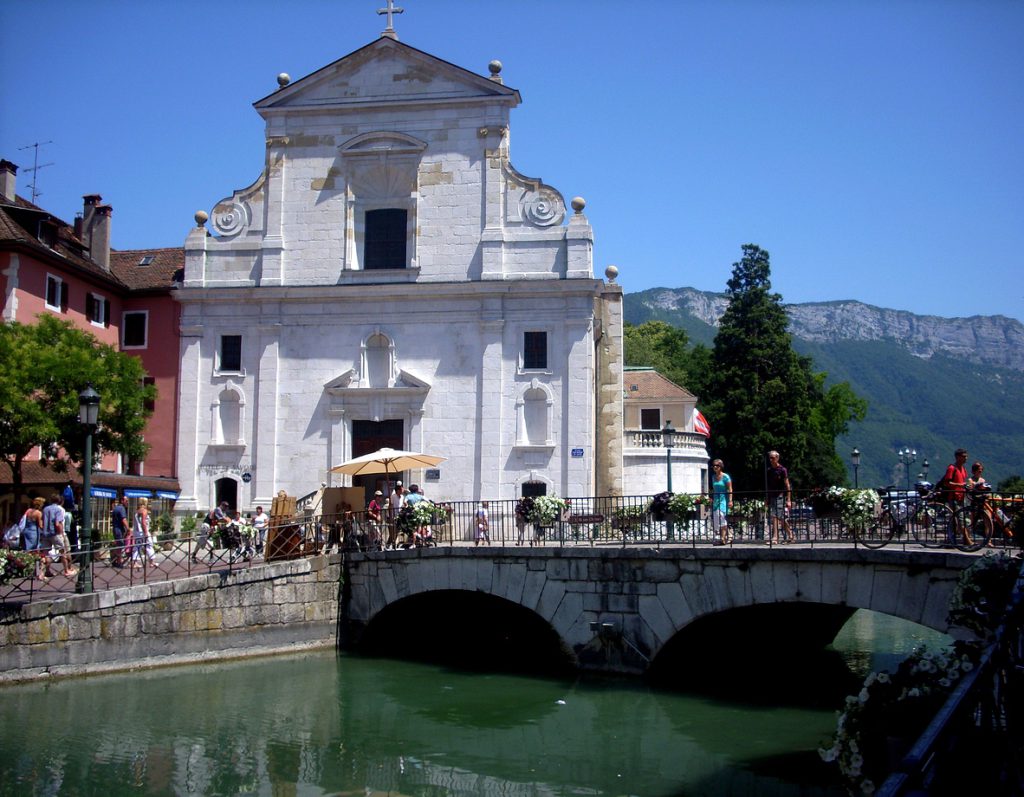
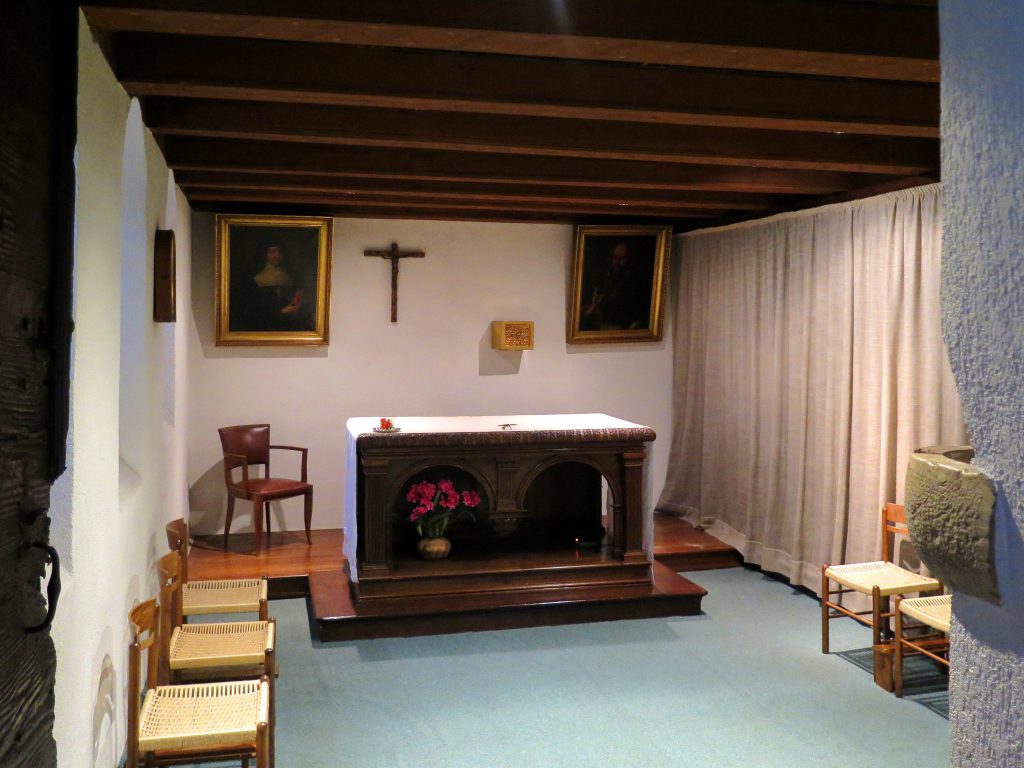
Foundation
The Visitation was founded in Annecy (Haute-Savoie) on June 6, 1610. “To give God women of prayer,” that is, to form people capable of expressing with the totality of their lives adoration to God in spirit and truth, as a response of grateful and total love: this was the motive, Francis himself declared, that had induced him to open the first house of the Visitation. To use current terms, it is for the time being a congregation of diocesan right.
The time of the foundation of the Visitation is thus the 1600s: a Europe troubled by continuous wars that redraw the borders each time, while different national identities are becoming more precise. A Church now torn by schism, committed to the implementation of the lines that emerged in Trent. A varied cultural reality in the full ferment of new insights.
The place is Annecy, in Haute-Savoie, overlooking the lake of the same name with the crown of mountains gently sloping down to the waters, enclosed within the circle of its walls under the austere gaze of the Duke of Nemours’ castle, on the border between the Catholic Duchy of Savoy and the territories of Geneva, a stronghold and emblem of Calvinism and whose bishop had been exiled to Annecy for years. At the crossroads of different cultural and social worlds.
Here, in the suburb of La Perrière, at sunset on that June 6, 1610, the feast of the Holy Trinity, three young women, escorted by a procession of nobles and people of the people, arrive at the house called La Galerie to begin there the experience of common life on the basis of an outline of Constitutions drafted by Francis de Sales and delivered to them by him that same evening. They are Jeanne Frances Fremyot de Chantal, who can rightly be considered the co-founder: 38 years old, baroness of Burgundy, widow and mother, “lucid mind, ready, decisive, vigorous heart, able to love and will with power”; Jacqueline Favre, 18 years old, open and free spirit, lover of dance and beauty, daughter of Senator Antoine Favre, Savoyard AOC, highly cultured humanist, one of the most celebrated jurists of his time and close friend of Francis de Sales; Jeanne Charlotte de Brechard, 30, a Burgundian, behind her a mysterious history of human suffering and supernatural splendor, entered by providential means into the spiritual radiance of the bishop of Geneva. Ad attenderle c’è Anne Jacqueline Coste, antesignana delle future sorelle esterne della Visitazione. Before long new vocations were flowing in. On June 6, 1611, the first three sisters make their oblation: three seeds sown in the fertile soil of Annecy destined to produce abundant harvests.
By 1612 the first dwelling proved too narrow and inadequate. Thus the house of the lawyer Nyccolin, located between the Dominican convent and the Thiou, was purchased. Here in October 1612 the community moved in and this was to be considered the order’s first monastery, the Sainte Source.

Developments
It is 1615 when the Visitation is called to found a new house in Lyon. Another state, the kingdom of France, with other laws; another bishop, Denis de Marquemont, primate of France. The confrontation with Marquemont accelerates the process of clarifying the legal status of the Visitation itself. For reasons basically of economic and social interest, the bishop of Lyon proposes that the ‘little congregation’ be erected into a religious order. Francis de Sales accepts because he sees in this step, which alters nothing in the proper purpose he wanted for the Visitation, the key to access the kingdom of France where the presence of his religious family is already required from several places. With the brief of Paul V (1618), therefore, the Visitation is erected into a religious order, and with that held to the enclosure codified by the Council of Trent, under the rule of Augustine and the constitutions of the bishop of Geneva, while maintaining peculiarities tenaciously desired by Francis, such as the recitation of the ‘little office’ (i.e., the brief office of Our Lady) instead of the Roman office, the possibility of welcoming women for retreat and admitting widows. From this time the order experienced rapid and steady expansion until the dawn of the French Revolution. The secret of this expansion lies in Francis de Sales’ ability to have grasped the signs of the times with the new spiritual needs that were emerging and to have given a convincing and effective response to them. At the death of Francis (1622) there were 14 houses founded; at the death of Mother de Chantal (1641), there would be 87, present not only in the Duchy of Savoy and the Kingdom of France but also in other European states.
By the nineteenth century, if some communities after the revolutionary storm will be found to have disappeared, others will be reconstituted and start living again, while new foundations will see the light of day reaching the other side of the Atlantic.
At present
Today the Visitation has about 135 monasteries, grouped into 17 federations and present in 33 countries: the U.S., Canada, Mexico, Guatemala, San Salvador, Panama, the Dominican Republic, Colombia, Ecuador, Peru, Chile, Brazil, Paraguay, Uruguay, Argentina, Burundi, Rwanda, Congo Brazzaville and Guinea eq., Lebanon and South Korea, France, Spain, Portugal, Italy, Switzerland, Germany, Austria, Poland, Hungary, Croatia, the Czech Republic, and England.
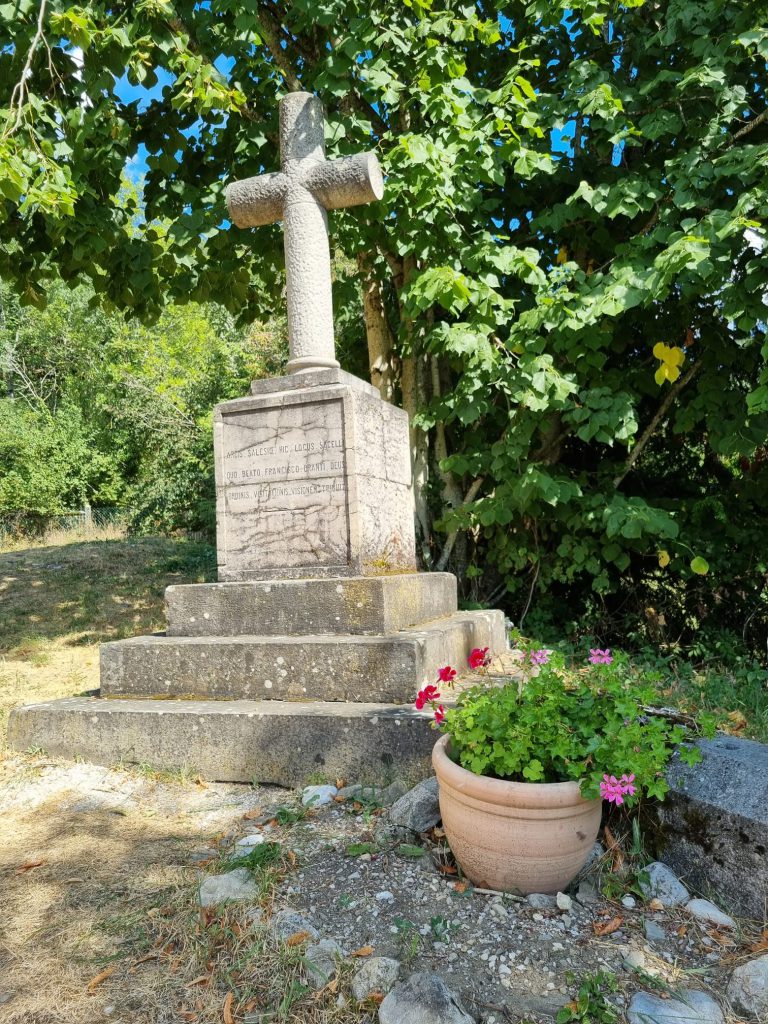
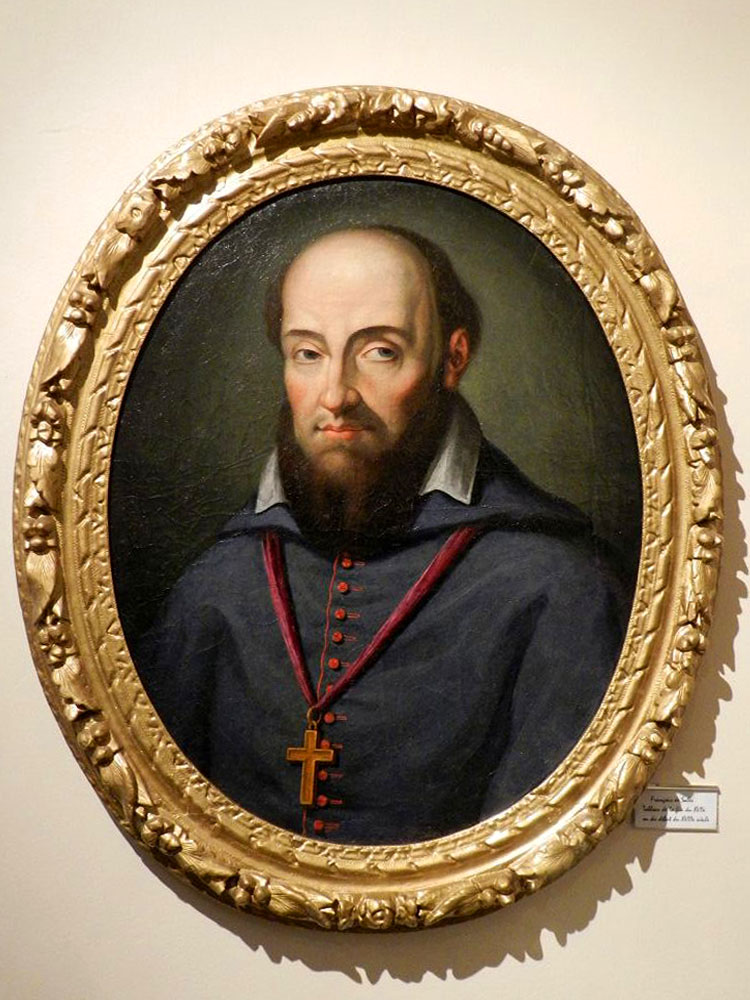
Spirituality
The proposal that Francis de Sales makes in opening the Visitation is absolutely innovative at the time: to aim at the highest peaks of love to the point of union with God by walking a path of humble love, interior asceticism, cordial charity, friendship, in the shuffling of days, in simplicity and modesty. In devising the Visitation Francis is also moved by his profound pastoral concern: to make this path accessible to the greatest number of women, including those who, while thirsting for the heights of loving union with God, for various reasons could not, in his time, have access to existing monasteries or, while feeling called to an exclusive dedication to God, no longer recognize themselves in forms of life burdened with an infinity of exterior practices, marked by great external austerities, but impoverished as to spiritual depth. Francis de Sales, profoundly aware that the only answer to the Calvinist drift is holiness lived within the Church, wanted the Visitation to serve the Church itself, not with ‘apostolic works,’ but with an ‘apostolic life,’ that is, of integrally lived Gospel, of witness and fruitfulness of good offered unconditionally to all brothers and sisters. He loves to describe the Visitation as a reality in which everything is simple, poor, modest, however, he immediately adds, “except the aspiration of those who dwell there,” an aspiration of fullness of love that knows no other limit than that of the very Heart of God.
In the diversified religious universe of his time, Francis de Sales thought of and proposed the Visitation as an “academy of love,” that is, as a place to learn, practice, and communicate the art of God’s love, the one that alone makes us fully human.
The Visitation was thus born contemplative, in the declared intention of the founder as it was already in the experience of the first sisters. Oriented toward the attainment of the pure love of God, in abandonment to his benevolent will, recognized and blessed in the texture of humble daily events as in the great hours of history: the lines of force that innervate life in the monastery find their sure theological foundation and accomplished expression in the pages Treatise on the Love of God that Francis de Sales was drafting in the very same years in which the idea matured and then the reality of the Visitation germinated.
This is why the most beautiful portrait of a nun of the Visitation – a goal never reached but always to be striving for anew – is the one Francis sketches in Book X of his Treatise describing “the bride” par excellence: “she who loves most, the most lovable and the most beloved, who not only loves God above all things and in all things but in all things loves only God […] and since it is only God whom she loves in all that she loves, she loves him equally everywhere […] she loves her king equally with all the universe or without all the universe. She does not even love heaven except because there the Bridegroom can be loved.”
How it is possible to come to this is still Francis who traces the way and indicates the appropriate means. The way is the imitation of Jesus, or rather leaving free space in oneself for him, to the point of being able to say with St. Paul, “It is no longer I who live, but Christ lives in me.” The means are the virtues dearest to the Savior who called himself “meek and humble of heart”: humility therefore toward God and gentleness toward one’s neighbor, declined in all situations of life.
The humus that makes all this life, and full, beautiful, concrete life, is prayer, a reality that gradually becomes all-encompassing until it envelops and penetrates all existence. Prayer which essentially means relationship, ‘friendship of predilection,’ to use the words of Francis de Sales, with the persons of the Most Holy Trinity, and which of that relationship knows all the nuances, the delicacies, the unthinkable depths, the boundless horizons.
Characteristics of the charism in brief:
on a spiritual level
Distinguishing notes: humility toward God and gentleness toward one’s neighbor; intense life of fraternity in simplicity and poverty; relationships marked by “cordial friendship”; exercise of charity, both in the community itself and in openness to the brethren, lived above all as readiness to welcome, listen, comfort, accompany; absence of outward austerities, replaced by a rigorous commitment to inner stripping, purification of the affections, overcoming one’s inclinations and surrendering one’s own will to that of God, manifested in the rule, in obedience, in the very instances of life; joy and freedom of spirit; a spirit of prayer, service, and praise. These are the constitutive elements of the Order and which Francis de Sales sees well expressed precisely in the “little joyful mystery” of the Visitation. Hence the choice of this name for its foundation.
in the structure of the order
Francis de Sales thought of the Visitation as a set of autonomous houses, not dependent on any central authority, autonomous but closely linked by the bond of charity, concretized by the common reference of all to the Visitation of Annecy, the Sainte Source, by the observance of the same constitutions and by ‘horizontal’ communication among the different houses: each one obliged to send to all the others at least every three years, that is, at the change of superior, or, where it is not too onerous, even more often, a circular letter in which she shares the most important events experienced and the situation (number of members, health, condition of the monastery, difficulties, etc.) of the community.
Preserving full autonomy in the deepest communion and collaboration will be a nagging that will accompany Joan Frances d Chantal until her deathbed as her letter-testament addressed to the sisters attests.
Much of what today constitutes the spirit and practice of federations of monasteries is lived out in the Visitation from the very beginning. Thus, from the very beginning, help between the different houses is normal practice, the help of a material kind but especially as an ‘exchange’ of sisters (called mainly as superior or novitiate master, or for other skills) from one house to another according to need and possibility.
Each monastery is then entrusted to the special care of the diocesan bishop who appoints its chaplain and confessors. In the exercise of authority, the superior (elected every three years by all the sisters in perpetual vows) is assisted by the chapter, made up of all the professed sisters in perpetual vows, and by the council made up of a variable number (according to the numerical strength of the community) of sisters elected by the chapter itself.
